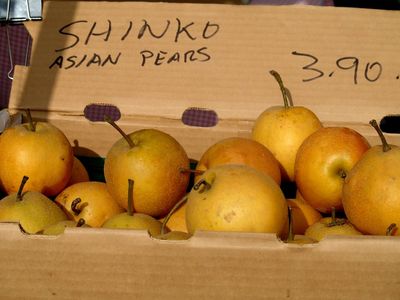Shinko Asian Pear Info
With shiny green leaves and masses of white blooms, Shinko Asian pear trees are a valuable addition to the landscape. Shinko Asian pear trees tend to be resistant to fire blight, which makes them a good choice for home gardeners. Height of Shinko Asian pears trees at maturity ranges from 12 to19 feet (3.5 -6 m.), with a spread of 6 to 8 feet (2-3 m.). Shinko pears are ready for harvest from mid-July through September, depending on your climate. Unlike European pears, Asian pears can be ripened on the tree. Chilling requirements for Shinko Asian pears is estimated to be at least 450 hours below 45 F. (7 C.). Once harvested, Shinko Asian pears store well for two or three months.
How to Grow Shinko Pears
Shinko pear trees need well-drained soil, as the trees don’t tolerate wet feet. At least six to eight hours of sunlight per day promotes healthy blooming. Shinko pear trees are partially self-fruitful, which means it’s a good idea to plant at least two varieties nearby to ensure successful cross-pollination. Good candidates include:
Hosui Korean Giant Chojuro Kikusui Shinseiki
Shinko Pear Tree Care
With Shinko pear tree growing comes adequate care. Water Shinko pear trees deeply at planting time, even if it’s raining. Water the tree regularly – whenever the soil surface dries out slightly – for the first few years. It’s safe to cut back on watering once the tree is well established. Feed Shinko Asian pears every spring using an all-purpose fertilizer or a product formulated specifically for fruit trees. Prune Shinko pear trees before new growth appears in late winter or early spring. Thin the canopy to improve air circulation. Remove dead and damaged growth, or branches that rub or cross other branches. Remove wayward growth and “water sprouts” throughout the growing season. Thin young fruit when the pears are no larger than a dime, as Shinko Asian pears often produce more fruit than the branches can support. Thinning also produces larger, higher quality fruit. Clean up dead leaves and other plant debris under the trees every spring. Sanitation helps eliminate pests and disease that may have overwintered.
